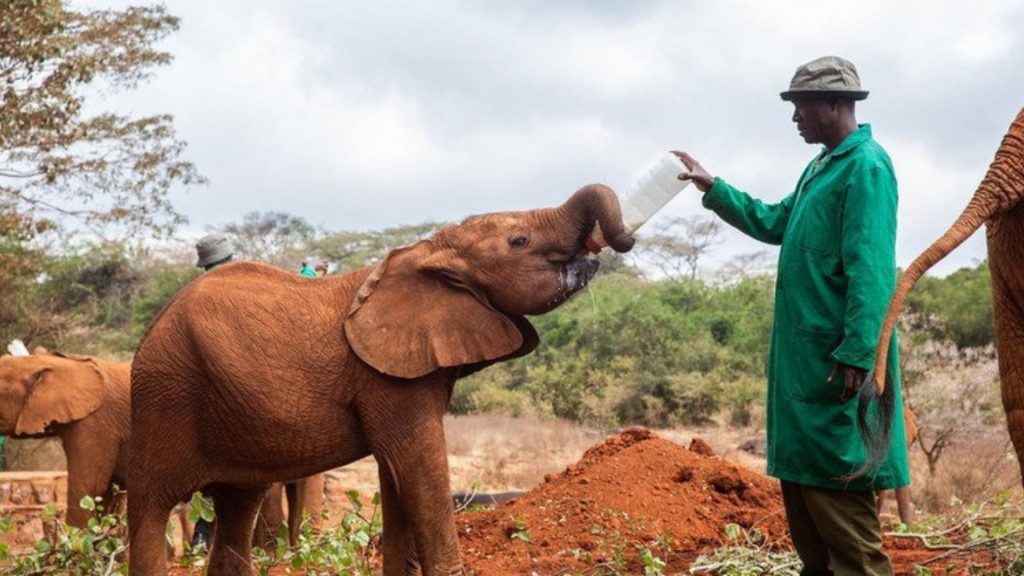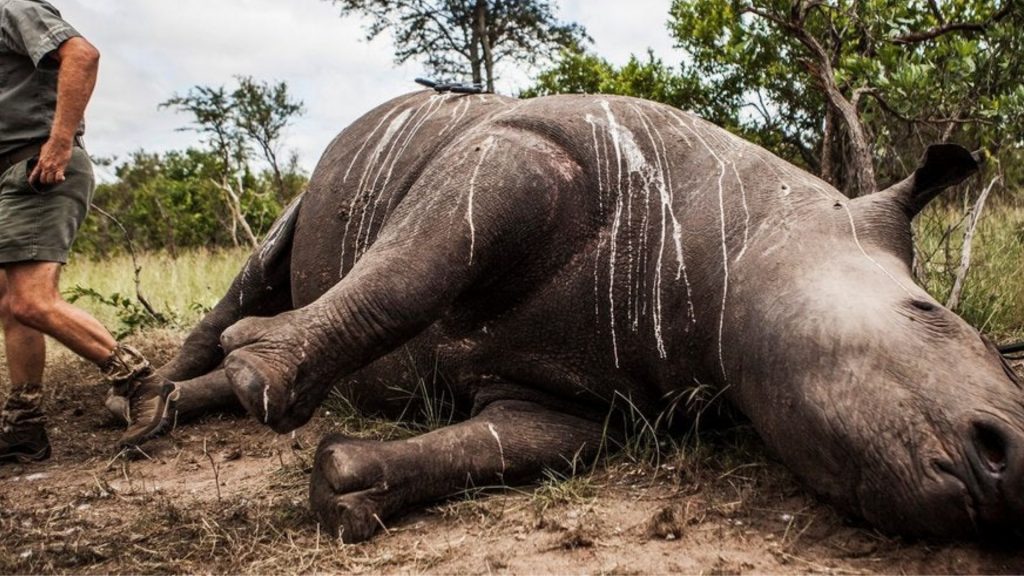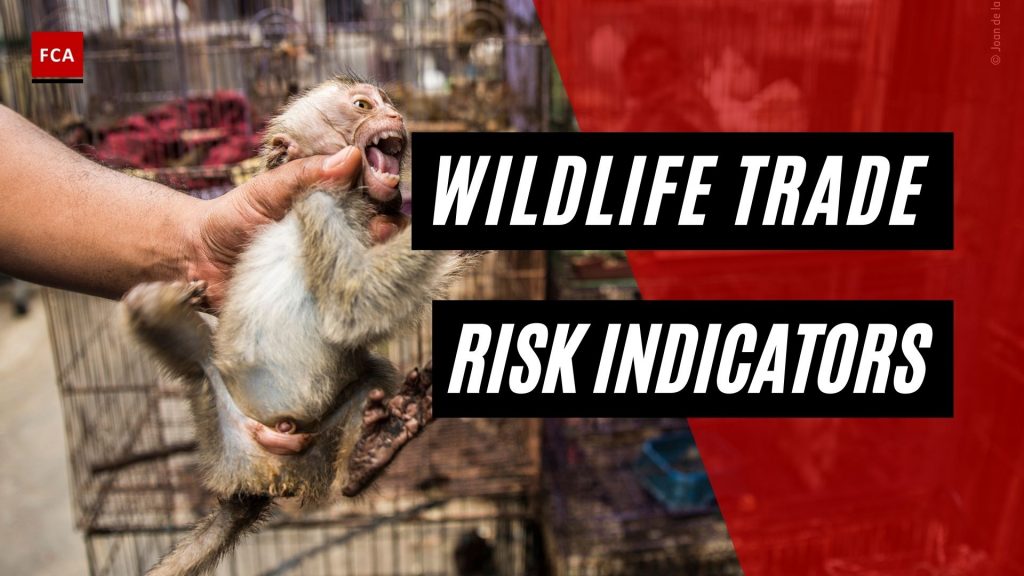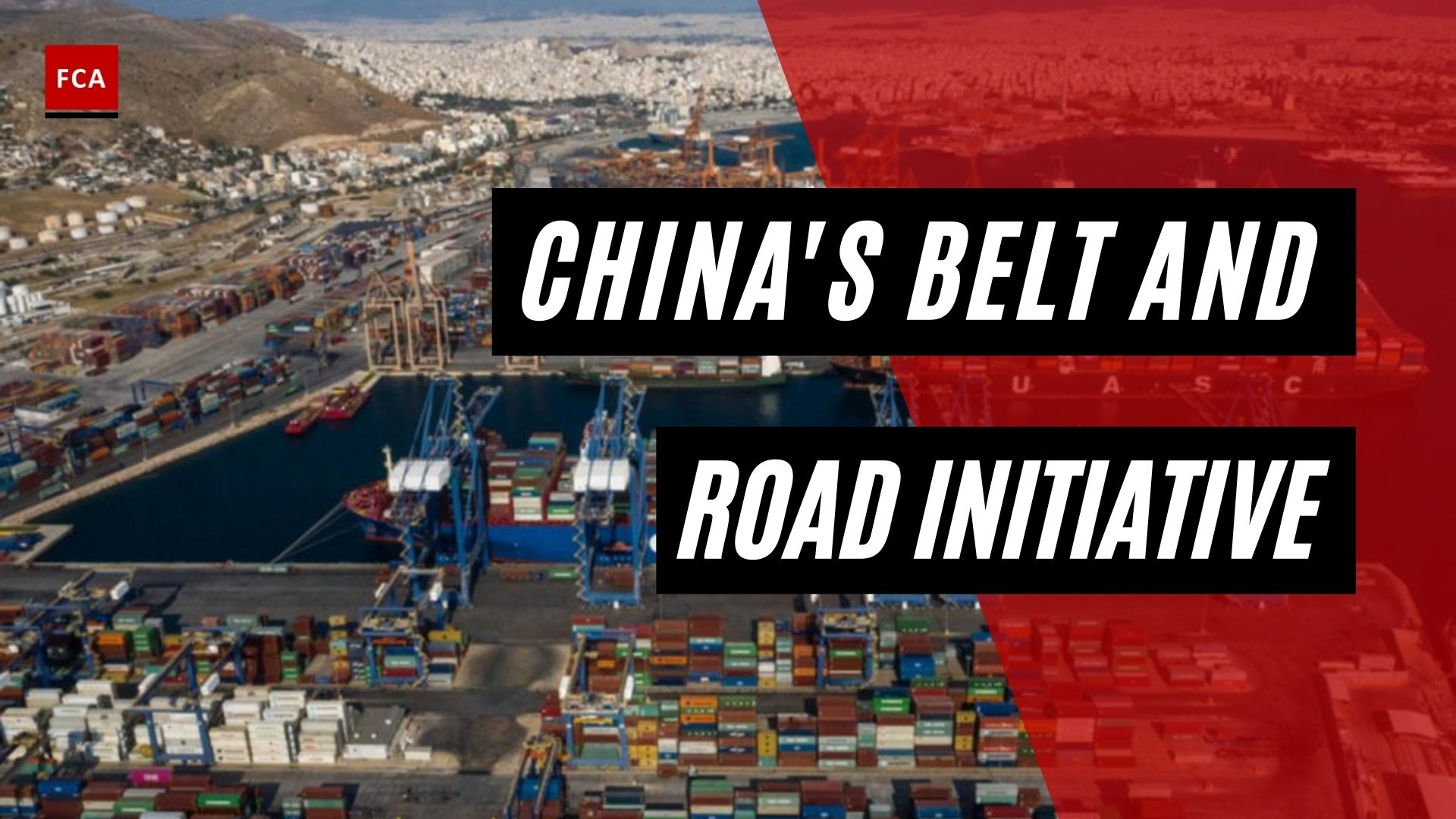Wildlife trade risk indicators specific to financial institutions. Following a report published by the FATF, there is a handful of risk indicators are relevant for financial institutions. These risk indicators can support financial institutions in identifying potential suspicious transactions and behavior patterns that could be indicative of financial crimes, such as money laundering, linked to the illegal wildlife trade.

Wildlife Trade Risk Indicators Specific To Financial Institutions
These risk indicators identified below have been developed by FATF and their partners based on country experiences in investigations and cases, open-source information as well as information provided by the United for Wildlife Financial Taskforce and the Basel Institute.
However, it must be noted that these intelligence-led risk indicators highlight potentially actionable patterns in client profiles (individuals and corporates), transactions and client account activity, but should not be considered in isolation. A risk indicator demonstrates or suggests the likelihood of the occurrence of suspicious activity. One risk indicator alone, or without additional information about the client or transaction, is not likely to be sufficient to suggest illicit activity.
As a consequence, financial institutions should be careful when implementing risk indicators into their transaction monitoring systems, as the introduction of stand-alone, generic indicators could lead to the generation of large volumes of alerts that may end-up being false positives.
According to FATF, there are three predominant categories of risk indicators relating to client profiles, transaction and client account activity, as well as other risk indicators. Let’s discuss these categories individually.
Client Profiles
Let us start by exploring risk indicators relating to a financial institution’s client profiles first. Financial institutions oftentimes have a wealth of knowledge about their clients and regularly client profile information is available in case the so-called Know Your Customer profile of a client is complete and up-to-date.
- The first risk indicator relating to the client profile is the involvement of international trade companies, including import-export, freight forwarding, customs clearance, logistics, or similar types of companies operating in the following commodities long high-risk corridors or ports for IWT supply and demand. Relevant product may include raw or squared wooden logs, plastic waste or pellets, frozen food, fish maws, various kinds of beans, stone or quartz blocks.
- The second risk indicator is the use of common containers, consignees, transporter, clearing agents, or exporters as seen in other cases believed to involve IWT;
- The third risk indicator relates to activity involving politically exposed persons and wealthy businessmen/women, particularly those with environmental, game, or forestry oversight or environmental or wildlife-related businesses.
- The next risk indicator, which is risk indicator number four, considers the involvement of legal wildlife-related entities such as private zoos, breeders, (exotic) pet stores, safari companies, pharmaceutical companies making medicines containing wildlife and wildlife collectors or reserves.
- Finally, the fifth risk indicator relating to the client profile is concerning individual or beneficial owner(s) of a corporate domiciled in jurisdiction that is a prominent transit or demand country for illegal wildlife. Ports with reported high volume of illegal wildlife seizures in recent years include the Port of Dar es Salam, the Port of Manila, and the Port of Mombasa, among others.

Transactions And Client Account Activity
Let’s move on and discuss relevant risk indicators relating to transactions and client account activity. Financial institutions regularly monitor client transactions and screen their clients’ account activity. This data can be leveraged to detect pattern that potential relates to the illegal wildlife trade.
Cash Payments
First of all, there is a variety of risk indicators relating to cash payments. Let us make 3 examples of cash-related risk indicators that could be indicative for illegal wildlife trade. These exemplary risk indicators include:
- Large cash deposit by government officials working in wildlife protection agencies, border control or customs and revenue officials;
- Large cash or other deposits, wire transfers, multiple cash deposits and withdrawals, and/or unexplained wealth from government officials working in forestry agencies, wildlife management authorities, zoo and wildlife park employees, or CITES Management Authorities; and
- Large cash or other deposits, multiple cash deposits and withdrawals, and/or unexplained wealth from government officials from environment or other ministries who have specific management or oversight authority of government stockpiles of seized ivory, rhino horn, timber, or other illegal wildlife products.
Transactions
In addition to cash payments themselves, electronic transactions themselves can also be suspicious and might show indicia for illegal wildlife trade. There is a variety of typologies on suspicious transactions, but let’s speak about the following 7 examples, including:
- Transactions having discrepancies between the description or value, of the commodity in customs and shipping documents and invoice, relative to the actual goods shipped or quoted price or the actual value in payments made;
- Transactions for hired vehicles and domestic accommodation from known members of a trafficking syndicate who are not present in the country or region within a country;
- Transactions between licensed pet shop suppliers/breeders and known wildlife poachers and traffickers;
- Transactions to licensed pet shop suppliers/breeders that originate from overseas, and/or incommensurate with stated business activities;
- Large transactions to licensed pet shop suppliers/breeders where there is significant discrepancies between the animal/product ordered and the value of the good
- Transactions from known traffickers to individuals who then pay for couriers or packages via the post and
- Transactions between entities operating in disparate lines of business.
Reference to Species
Another group of risk indicators relates to mentioning particular protects specifies within a transaction or similar, or clear reference to CITES. Risk factors include:
- Shipments of legal wildlife (fauna and flora) with anomalous, incomplete, or otherwise suspicious CITES certificates.
- Transactions using names of ingredients or products in the traditional medical trade that refer to CITIES species.
- Transaction references using specimen names or veiled speech.

Use of Products
In addition, the use of particular products might seem unusual and could be indicative for illegal wildlife trade. It is especially noteworthy if the product a customer chooses to utilize is illogical with the business purpose. Risk factors include:
- Illogical or anomalous loans between trading or import/export companies in key IWT source or transit countries.
- Escrow-type transactions from/to accounts and companies with same beneficial owner in particular for payment of cross-border and transcontinental shipments.
- Third-party wire transfers/cash deposits to, or withdrawals by, known wildlife poachers and traffickers.
- International wire transfers from known wildlife traffickers to a relative’s accounts as tuition, allowance, or family support payments.
- Large dollar wire transfers between wildlife farms and firms operating in inconsistent lines of business. Particular attention should be given to payments with firms that produce goods which may be used as “cover loads” to hide illicit wildlife products (e.g., manufacturers / traders of coffee, tea, beans, or used clothing).
Additional Risk Indicators
Finally, there are some additional risk indicators relating to transactions and client account activity, including:
- Switched bills of lading by traders previously implicated in criminal activity involving wildlife trafficking or trade fraud investigations or prosecutions.
- Illogical or anomalous purchases, payments, or other transactions related to gold trading from business accounts of clients. Payments for wildlife shipping are often masked as payment for gold or to gold trading business.
- Individuals or companies suspected of being involved, or linked to, IWT networks using bank accounts and addresses located in different countries.
- Middleman transactions – large incoming payments followed by smaller outgoing payments; and
- Rental card transactions with two bookings close in time in neighboring countries.
Other Risk Indicators
Lastly, there are other risk indicators, which may not directly relate to client profiles or transaction monitoring, but which are equally important. These risk indicators include:
- Adverse media connected to wildlife or environmental crimes identified in open and available sources on individuals and/or entities involved in reviewed financial transactions;
- Airline passengers traveling on high-risk routes know for illegal wildlife trade on tickets paid for by a third party or in cash; and
- Payments from companies from industries using illegal wildlife products, including traditional medicine manufacturers, leather producers, auctioneers of wildlife products, and exotic food providers to known wildlife traders or their associates or other entities above that have been identified as involved in the illegal wildlife trade.
Final Thoughts
Wildlife crime poses a serious threat to thousands of plant and animal species, some of which are on the verge of extinction. It is a global problem that affects almost every jurisdiction as a source, transit point, or destination for illegal wildlife products.
Wildlife crime has grown into a significant and specialized area of transnational organized crime in recent years, fueled by high demand and facilitated by a lack of effective law enforcement and low priority as a serious crime, weak legislation, and ineffective penalties. It is a highly profitable illegal trade, with wildlife products commanding high prices on the black market and global proceeds estimated to be between US$7 and US$23 billion per year.









